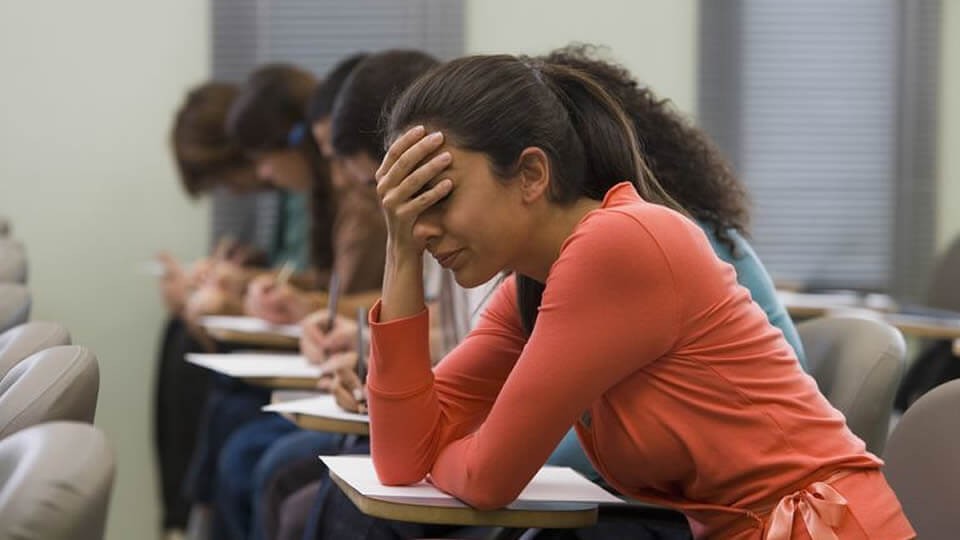One of the most significant stages of development is adolescence. Statistics indicate that mental health challenges such as anxiety have affected 24.6 million adolescents globally. (UNICEF, 2014). The increase in psychological health problems such as anxiety are a matter of concern and may reveal the challenges that some adolescents go through as they encounter the spiritual, physical, psychological and cognitive changes that during puberty (Bhandari, 2016). Anxiety symptoms among adolescents are poorly recognized by health care providers, teachers, and parents among others yet they are common mental illnesses that manifests early by the age of 14 years (Rasing, Creemers, Janssens, & Scholte, 2017).
What is Anxiety?
According to the American Psychological Association (2013), anxiety is viewed as an emotion characterized by feelings of tension, worried thoughts and physical changes such as increased blood pressure. Individuals with anxiety disorders usually have recurring intrusive concerns. They may avoid certain situations out of worry and tension. Individuals may also experience physical symptoms such as excessive sweating, trembling, dizziness or a rapid heartbeat.
Risk factors related to depression and anxiety in adolescents
Age: Adolescents’ vulnerability to anxiety tends to increase with age. For instance, in a study that was conducted in the US by the national comorbidity survey, adolescents aged 13 to18 were found to be suffering from anxiety related disorders. Further, the same study reported that the adolescents presented with certain anxiety disorders such as social anxiety for adolescents aged 13 to 16 years old, and obsessive compulsive disorder for adolescents aged 17 to 18 years old.
Gender: Studies have indicated that being female is associated with heightened levels of anxiety disorders such as panic attack, social anxiety, specific phobia, generalized anxiety disorder as well as posttraumatic stress disorder.
Negative life events: Stressful life events are also related with high risk of developing anxiety. Some risk factors could be related to lifestyle and habits such as health status and substance abuse.
Recognizing Anxiety-Signs and Symptoms
Emotional changes: Felling on edge, unexplained anger outbursts, irritability, agitation and difficulty concentrating.
Social changes: spending time alone, avoiding social interactions with friends, isolation from peers as well as avoiding extracurricular activities.
Physical changes: changes in eating and sleeping patterns, frequent headaches, excessive fatigue, somatoform patterns such as gastrointestinal problems.
Effects of Anxiety in adolescents
- Decreased school performance
- Decreased self esteem
- Risk for developing other forms of psychopathology for instance; suicidal behavior as a result of depression
- Increased alcohol and drug use
Helping adolescents handle anxiety
Deep breathing
Learning to use deep breathing effectively helps adolescents to control their breathing on their own. When they are anxious, using deep breathing will slow their heart rate and regulate their physical responses to anxious feelings.
Self-talk
Adolescents can learn to address their worries by reframing their thoughts and using self-talk to feel empowered. Restructuring worries in an assertive voice aids adolescents in gaining control over their anxious thoughts.
Talk with adolescents about their social media use
Help them take breaks when using gadgets, think critically as well as rationally about the effect of social media on their lives.
Daily Exercises
Daily exercise can help reduce the body’s physical response to anxiety. Adolescents who engage in physical exercises not only experience the uplifting effects of exercise immediately following the workout, but that the results last long afterwards.
Conversation with adolescents about potential stressors
Try to see the world the way they do—and help them to keep perspective and find ways to cope.
Be mindful of expectations
High expectations can help adolescents reach their potential, but they need to be realistic ones.
Write it down-tear it up
Writing down anxious feelings is a great way to vent negative emotions on paper. Adolescents should be encouraged to write down anxious thoughts and then tear them up and throw them away. The process of getting it down on paper and tearing up the paper helps adolescents symbolically throw away their worries for the moment. Sure, those worries might come back another time, but once adolescents learn that they can overcome them by writing and throwing them out, they feel greater control over their anxiety.
Hug and empathize
As humans, we tend to underestimate the power of human touch. Physical touch releases oxytocin, a feel-good hormone and reduces cortisol, a stress hormone. A long hug by a significant can help comfort an anxious adolescent in the moment and restore a feeling of calm.
Be aware of the signs of anxiety
It is significant that adults become aware of the anxiety symptoms adolescents may be presenting with such as avoiding activities, recurrent worries somatoform complains and engagement in risky behaviors.
When to seek professional help
This is significant when you sense that;
- An adolescent is becoming more withdrawn and anxious.
- He/she is having problems interacting with people in their social environment or school.
- Inability to control ones behavior.
References
American Psychological Association. (2013). Diagnostic and statistical manual of mental disorders. 5th ed. Arlington (VA): American psychiatric association.
Bhandari, M. (2016). Anxiety and depression among adolescent students at higher secondary school. BIBECHANA, 14, 103. https://doi.org/10.3126/bibechana.v14i0.16019
Huang, L.-C, Tsai, K.-J, Wang, H.-K, Sung, P.-S, Wu, M.-H, Hung, K.-W, & Lin, S.-H. (2014). Prevalence, incidence, and comorbidity of clinically diagnosed obsessive– compulsive disorder in Taiwan:A national population-based study. Psychiatry Research, (220(2014)), 335–341.
Rasing, S. P. A., Creemers, D. H. M., Janssens, J. M. A. M., & Scholte, R. H. J. (2017). Depression and Anxiety Prevention Based on Cognitive Behavioral Therapy for At-Risk Adolescents: A Meta-Analytic Review. Frontiers in Psychology, 8. https://doi.org/10.3389/fpsyg.2017.01066
UNICEF. (2014). Adolescents and youth; Kenya country Programme.
Written by:Maureen Nyayieka, MA. Counseling Psychology
Clinical Psychology (PHD, Student)
Edited by: Nyagithi Waweru
Tel: (+254) 0725366614 or
E-mail: ad***@************co.ke

